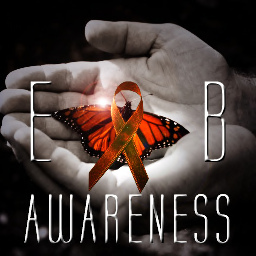Epidermolysis Bullosa (EB) is a group of inherited connective tissue diseases that cause blisters in the skin and mucosal membranes. It is a result of a defect in anchoring between the epidermis and dermis, resulting in friction and skin fragility. Its severity ranges from mild to lethal. “Butterfly Children” is a term often used to describe younger patients (because the skin is said to be as fragile as a butterfly’s wings). Epidermolysis bullosa refers to a group of inherited disorders that involve the formation of blisters following trivial trauma or friction. Over 300 mutations have been identified in this condition.
They have been classified into the following types:
1) Epidermolysis Bullosa Simplex
Epidermolysis bullosa simplex is a form of epidermolysis bullosa that causes blisters at the site of rubbing. It typically affects the hands and feet, and is typically inherited in an autosomal dominant manner, affecting the keratin genes KRT5 and KRT14.
2) Junctional Epidermolysis Bullosa
Junctional epidermolysis bullosa is an inherited disease affecting laminin and collagen. This disease is characterised by blister formation within the lamina lucida of the basement membrane zone[9]:599 and is inherited in an autosomal recessive manner. It also presents with blisters at the site of friction, especially on the hands and feet, and has variants that can occur in children and adults. Less than one per million people are estimated to have this form of epidemolysis bullosa.[10]
3) Dystrophic Epidermolysis Bullosa
Dystrophic epidermolysis bullosa is an inherited variant affecting the skin and other organs. “Butterfly children” is the term given to those born with the disease, as their skin is seen to be as delicate and fragile as a butterfly’s wings. Dystrophic epidermolysis bullosa is caused by genetic defects (or mutations) within the human COL7A1 gene encoding the protein type VII collagen (collagen VII).[11] DEB-causing mutations can be either autosomal dominant or autosomal recessive.
The human skin consists of two layers: an outermost layer called the epidermis and a layer underneath called the dermis. In individuals with healthy skin, there are protein anchors between these two layers that prevent them from moving independently from one another (shearing). In people born with EB, the two skin layers lack the protein anchors that hold them together, resulting in extremely fragile skin—even minor mechanical friction (like rubbing or pressure) or trauma will separate the layers of the skin and form blisters and painful sores. Sufferers of EB have compared the sores with third-degree burns.[12] Furthermore, as a complication of the chronic skin damage, people suffering from EB have an increased risk of malignancies (cancers) of the skin
***The above is snippets from Wikipedia***
Epidermolysis Bullosa Simplex was gifted to us by The Almighty. I know many of those afflicted with EB will gasp at (& probably even frown upon) my usage of the word ‘gifted’ in this context, but I truly believe this is what it is. I may not know why, but I know He has chosen this for us for a reason, for He (Glory be unto Him) does nothing in vain.
Would I ever wish this condition on anyone? Absolutely not! But I’d love for others to extract lessons from the lives of those with EB. Perhaps it’s easier for me to say this because I wasn’t born with the condition, but I sincerely hope that my little girl will find the lessons within the bandages, pain and discomfort. I pray she will find the sweetness of God’s love and mercy through her pain, and embody the patience, perseverance and impeccable character of our noble prophet, even during times of great adversity.
We’ve cried many tears and at times even hung or heads in utter defeat, wondering how much more we could handle before buckling under the pressure of it all, only to experience so much joy and contentment a short while later. Because of EB, we’ve learnt to appreciate the little things in life, and try not to take a moment for granted. It is in these precious moments that I am reminded: “إن مع العسر يسرا” , “Most assuredly, WITH every difficulty, comes ease” [Quran 94:6].

